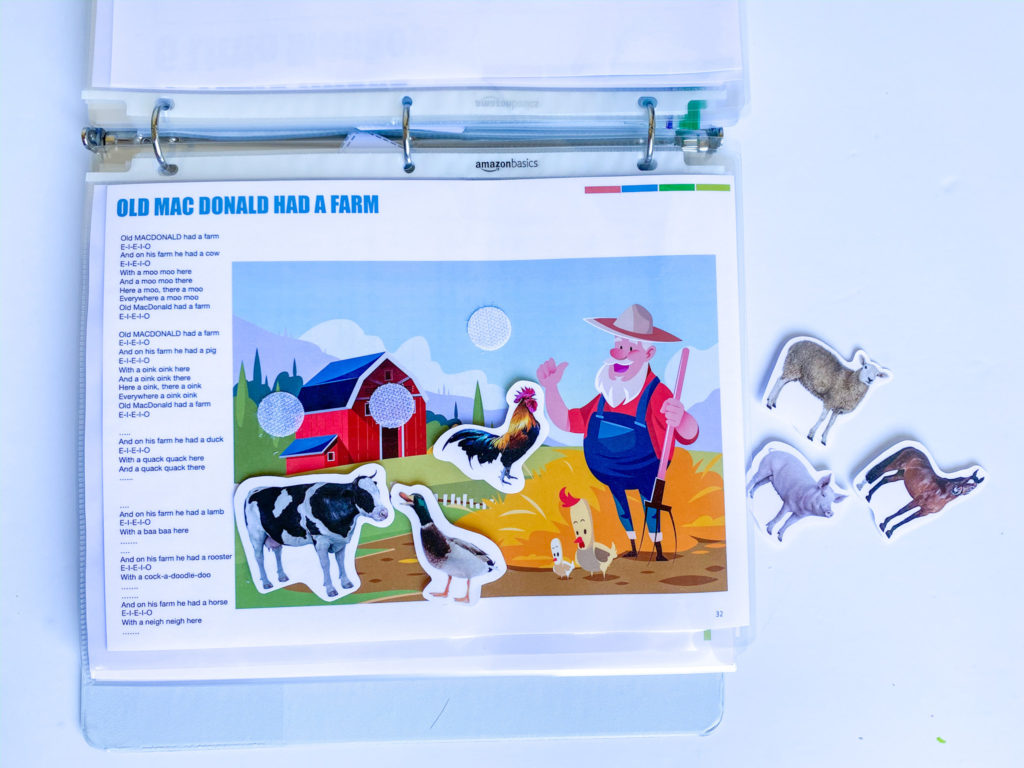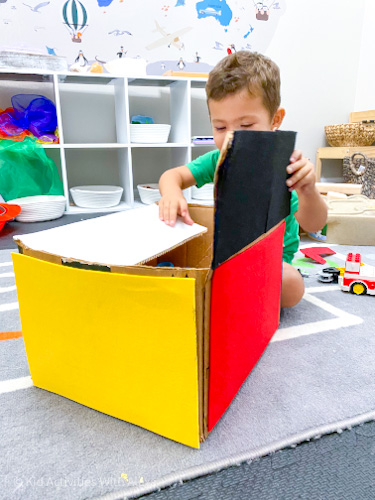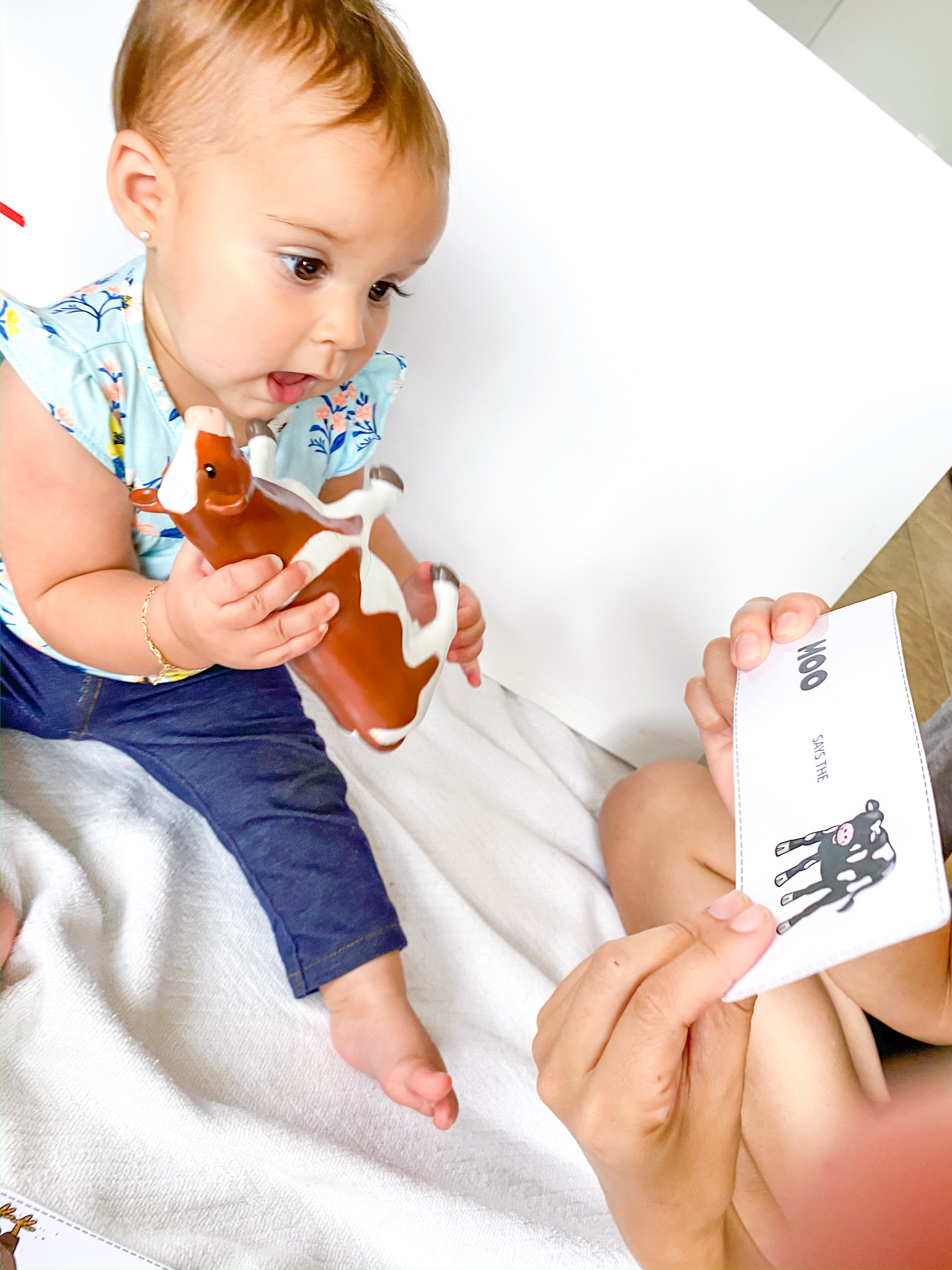I know how frustrating it can be when a toddler is not talking yet. My step-son didn’t speak a single word until after he was about 3 years old.
Talk about frustration! I didn’t know what I know now and I wished I could’ve helped him then.
I now often get asked what type of activities boost language development in toddlers.
I reached out to a speech-pathologist. Someone who’s whole job and passion is to get kids talking to give us her tips and Fun activities to boost speech.
Boys tend to develop language skills a little later than girls, but in general, kids may be labeled “late-talking children” if they speak less than 10 words by the age of 18 to 20 months, or fewer than 50 words by 21 to 30 months of age.
MedicineNet.com
Activities to boost speech-Development
Karli Press from Sunflower Therapy Services in South Florida, gave me the following article with tips and activities you can do at home to teach your toddler to talk.
Use Nursery Rhymes to boost language

Studies have shown that using songs, specially songs sang in singy-songy” voices (melodic intonation) can help increase language development and sustain a child’s intonation.
Use finger play actions and hand gestures ( sensory integration) while you sing the songs.
Studies show that sensory integration is a large part of increasing motivation and attention for a child to engage in the activity/playo Many children who are on the Autism Spectrum tend to seek for the sensory input,therefore this is helping them cope with their sensory needs while maintaining a language-enriched activity.
Use hand motions
- 5 little Ducks
- Old Macdonald
- 5 little monkeys
- Row-Row-Row your Boat
- Humpty Dumpty
- The Wheels on the Bus
While singing these songs, engage some sensory integration. How? You can simply engage your toddler in some rocking back and forth with them.
Row-Row-Row Your Boat: Make your hands go in circles for “go round and round”
Wheels on the Bus: Open and close your arms when “the doors on the bus go open and shut”
leave words out | Sentence Completion
Once your child starts understanding the song, leave a common/popular word from the song out and have them finish the sentence.
Slowly increase the amount of blanks in the song to encourage your toddler to sing back with you.
Example- “Row-Row your ______” Wait Time: Many children with language delays need a little extra time to process information. It might get awkward, but when you leave a blank or become silent during play, it encourages your child to express something.
It’s always important to give your child as many opportunities to speak as possible.
use Games to Boost Language

Playing with a Highly-Motivating Toy (whatever it is that your child interested in or peeks his interest)
out-Of-Reach Game
This is my favorite! It works like wonders! You want to always increase the amount of opportunities that the child can express their wants or needs. Place a toy that is highly motivating for them in a place where they are able to see where it is; however, they are unable to reach it. This provides them with an opportunity for them to have to request for the item.
Hello toy!
This game is best with toys that have many pieces (E.g., Legos, Dolls, Play Food)
This game is perfect opportunity when you are setting up a game or when you are cleaning up together. The idea is to repeat the name of the toy over and over and encourage Repetition.
When you are playing with toys that are in a box, pull out one object at a time and say, hello to the items as you take them out. (For example: *Take out pig* “Hi Pig!” *Putting away toy* “Bye Pig!”)
asking “more”
While setting up the toys, slowly take one object out of the box at a time. Teach your child to request for “more” of what is in the box. Requesting for more can either be using the “more” sign language sign or verbal speech, “more” or “I want ___” depending on their developmental level.
oops! That’s Not it
Purposely give them the wrong toy that they ask for. This will allow an opportunity for you to introduce to them how they can express “no.”
By providing opportunities for them to use the word, “no,” it allows them to understand the meaning of “no”.
It is important for your child to understand what “no” means. No is just a word to them until you put meaning to it.
The word now can be very valuable not only for denying them hogs we don’t want them to have, but as a form for them to express what they don’t like or want.
get silly!
Children love when you get silly with them! If you pick up an apple and your child knows that it is an apple, you can tell your child, “Wow! Look! I found a potato!” (Kids love to feel that they are smart and no more than you) This gives them the chance to elicit communication to tell you what it really is!
speak at their language level
This activity is best when you are Playing together, you can use Farm toy, printable worksheets, books, Cars, Baby Dolls (etc.)
It is important to help increase the length of your child’s utterances {a spoken word(s)}While your child is playing with the toys, sit with them and describe everything they are doing, BUT, make sure that when you are speaking to them, you are speaking at their level.
For example, if your child speaks at the one-word sentence level, make sure that you are speaking at the three-word level MAX.
If you say too much information, it will be too difficult for your child to process all of the information. Let alone imitate your words.
Your goal is to have your child imitate you.
If you speak too long of sentences for them to handle, it will be difficult for them to imitate you.
add one more
This strategy is called Expansion: This can also help increase the length of utterances.
When your child says something, add on to it.
For example: Child: “I like dog” Caregiver: “Yes! I like the big dog”. This allows them to hear an opportunity for them to imitate and expand their utterance with more information.
use books To Boost Language
Reading is ESSENTIAL part of language and brain boosting development. Books are wonderful because they have so many language opportunities for you to evoke a response.
Label what You see
Label items that you see in the book expressively OR receptively.
For example: “What is this?” or “Point to the ____.”
ask WH- Questions
Ask your child WH- Questions. Start with the first types of questions such as “what” and “where” questions.
Asking them a “when or why” question is too hard for them to express at this age. Keep your questions simple.
Final thoughts on language Boosting Activities
Every child develops at different stages but it is important to provide plenty of opportunities during the day to promote speech. Start encouraging sounds like “‘mmm” for cow, then move on towords Teo longer sounds such as “moo”for cow and eventually to words cow and so on.
The One Year Old Learning Binder was designed to promote a lot of speech opportunities through the interactive worksheets, using the flash card, realistic images and interactive nursery rhymes to help you get started in developing speech opportunities.
If you feel your child is not progressing in their speech, speak to your doctor, they can refer to you to a speech pathologist that can do a proper evaluation and provide you with one on one feedback to your unique situation.
This article was possible by the knowledge and activities shared by Speech Pathologist Karli Press
about Karli Press
Hi! My name is Karli Press and I’m currently a graduate student in a Speech-Language Pathology program. I will be graduating July of 2020. I currently live in South Florida. I’m extremely passionate (obsessed) about Speech-Language Pathology!
I have grown a passion for working with the pediatric/early intervention population. Helping children grow to their best potential is something that I strive for in all of my patients. Developing a strong connection and bond with them is also something that I take a lot of pride in. I hope you enjoy these tips for increasing your child’s language development. If you have any other questions, feel free to reach out to me. My Facebook is “Sunflower Therapy Services” and my Instagramhandle is @Sunflower.Therapy
